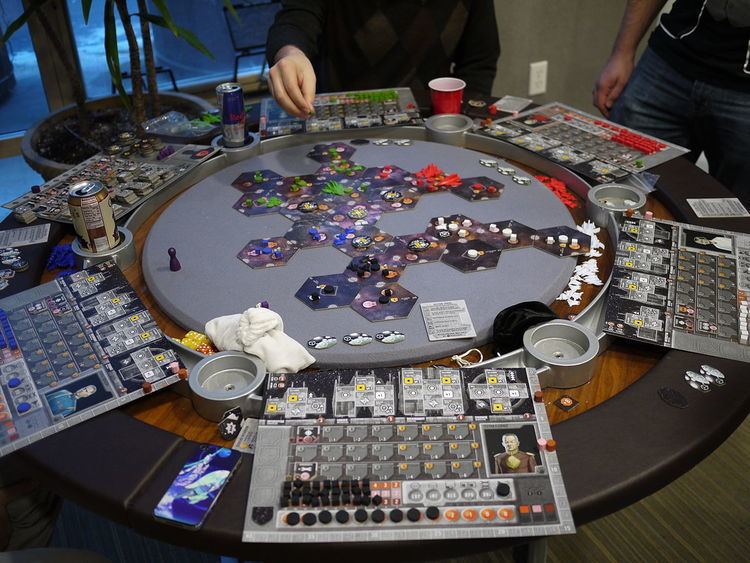Designer(s) Touko Tahkokallio Publication date 2011 Language(s) English | Publisher(s) Lautapelit.fi Genre(s) Strategy | |
 | ||
Illustrator(s) Ossi HiekkalaSampo Sikiö | ||
Eclipse: New Dawn for the Galaxy (commonly known as Eclipse) is a strategy board game produced by Lautapelit.fi. It was designed by Touko Tahkokallio and first released in 2011. The game currently has three expansions — Rise of the Ancients, released in 2012, Ship Pack One, released in 2013 and Shadow of the Rift, released in 2015 — and four mini expansions.
Contents
Game Background
After a ruthless war, the galaxy has been at peace because of the efforts of the major spacefaring species to preserve it. The Galactic Council was formed for that purpose. But tension is mounting again, and a new conflict seems to be inevitable. Which faction will prevail and lead the galaxy?
Gameplay
Eclipse is a 4X strategy game where you must lead your civilization to prevail over the others. Players can choose to play as either a human or alien civilization. On each move, a player takes one of six actions: building, exploring, influencing, moving, researching or upgrading. For example, exploring opens up a new tile in a direction chosen by the exploring player. Each action uses resources (money, materials or science), and resource management is a key part of gameplay.
The galaxy is laid out in three rings of hex tiles, most of which get laid during exploration. At the start of play, only the galaxy center tile and tiles for the players' respective home stars are laid. When exploring, a player chooses a tileless space which is accessible from a star the player occupies. The player then draws a new hex tile from a stack of face-down tiles and lays it in the chosen direction. The player may strategically choose which orientation the tile takes, to create links to existing tiles or to block access by other players.
Game Contents
Honors & Awards
Eclipse has received the following honors and awards:
Electronic Versions
The iOS version of the game was released in 2013.
Android and Steam versions were released in 2016.
